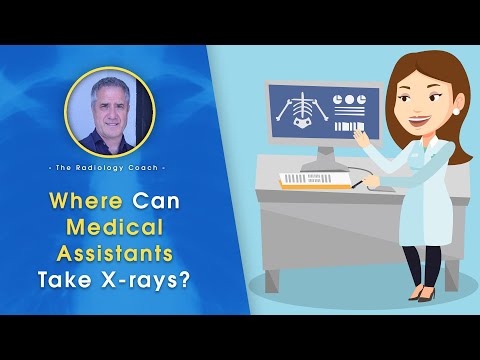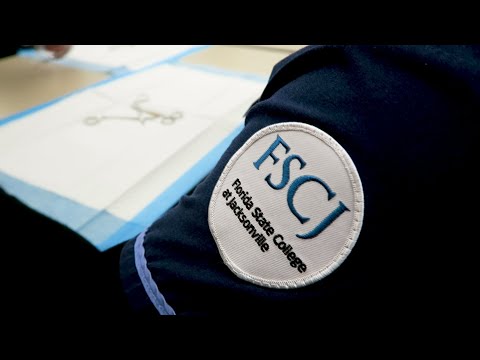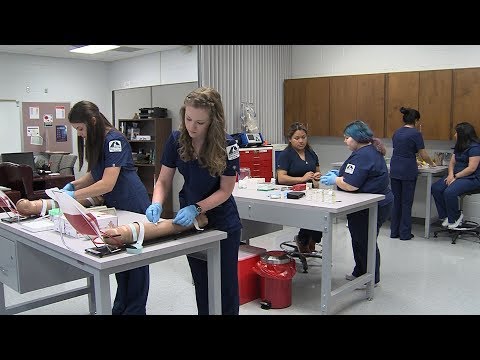What You Need to Know about Working as a Medical Assistant
Contents
If you’re thinking about a career in medical assisting, you probably have a lot of questions. What is the job like? What kind of training do you need? Here’s what you need to know about working as a medical assistant
Checkout this video:
Job Description
A medical assistant is an unlicensed member of the healthcare team who works under the supervision of a licensed physician or registered nurse. Medical assistants perform both clinical and administrative tasks in doctors’ offices, hospitals, outpatient clinics, and other healthcare settings. Their duties vary depending on state law, employer, and job location.
Medical assistants must be able to perform both administrative and clinical tasks. Administrative duties might include answering phones, greeting patients, scheduling appointments, handling insurance forms, and coding patients’ medical records Clinical duties might include taking patient histories, recording vital signs, prepare patients for examination, explain procedures to patients assist the physician during examinations and minor surgery.
Duties and Responsibilities
Medical Assistants are responsible for providing care to patients under the supervision of licensed healthcare professionals. They perform a variety of administrative and clinical tasks to keep the office of a doctor, podiatrist, or other health practitioner running smoothly.
The duties and responsibilities of medical assistants vary depending on the state in which they work and the specific needs of their employer. However, there are some tasks that are commonly performed by medical assistants across the country. These duties include greeting patients, scheduling appointments, taking medical histories, recording vital signs, preparing patients for examination, assisting with minor surgical procedures, drawing blood, and giving injections. In addition to these clinical tasks, medical assistants may also be responsible for performing administrative tasks such as answering phones, handling billing and insurance matters, ordering supplies, and preparing correspondence.
Qualifications and Skills
In order to work as a medical assistant, there are certain qualifications and skills that you will need. These include:
-A high school diploma or equivalent
-Completed a medical assistant program from an accredited institution
-Certification from a nationally recognized organization, such as the National Healthcare Association or the American Association of Medical Assistants
-Excellent communication and customer service skills
-Ability to type at least 30 words per minute
-Proficiency in Microsoft Office and other common computer programs
-Basic knowledge of medical terminology
-Ability to take vital signs and perform other basic medical procedures
Education and Training
Medical assistants are health care professionals who provide direct patient care and perform administrative tasks in hospitals, clinics, and other medical facilities. They work closely with physicians, nurses, and other health care providers to ensure that patients receive the best possible care.
Education and Training
Most medical assistants have at least a high school diploma or equivalent. Many have completed postsecondary education programs that last anywhere from 9 months to 2 years. These programs typically lead to a certificate or diploma. Some medical assistants choose to earn an Associate’s degree in medical assisting.
There is no standard certification for medical assistants, but several organizations offer voluntary certification exams. Certification can show employers that a medical assistant has the knowledge and skills necessary to perform their job duties effectively.
Salary and Job Outlook
Medical assistants are in high demand. The Bureau of Labor Statistics estimates that the number of medical assistant jobs will grow by 29% from 2019 to 2029 — much faster than the average for all occupations.
With such high demand, it’s no surprise that medical assistants earn a good salary. The median annual salary for medical assistants was $35,720 in May 2019, according to the BLS. The top 10% of earners made more than $50,410, while the bottom 10% earned less than $25,770.
Working Conditions
Medical assistants typically work in outpatient care centers, physician’s offices, and hospitals. Their duties vary with the location, specialty, and size of the practice.
Most medical assistants work full time. However, about 1 in 4 work part time. Because many medical offices are open during evening and weekend hours, some medical assistants may work evenings or weekends.
Medical assistants usually work on their feet for long periods. They also may have to lift and turn patients who are disabled or who need special care.
Career Progression
In order to work as a medical assistant, you will need to have at least a high school diploma or equivalent. Many medical assistants complete postsecondary education, which can include a certificate, diploma, or associate degree from an accredited program. Some states require medical assistants to be licensed or certified. Although certification is voluntary, it may be required by some employers or necessary to advance in your career.
There are several organizations that offer certification for medical assistants, including the American Association of Medical Assistants (AAMA) and the National Healthcare Association (NHA). To be eligible for certification, you must graduate from an accredited program and pass an examination. Certified medical assistants must meet continuing education requirements to maintain their certification.
Medical assistants can find employment in a variety of settings, including hospitals, clinics, physician’s offices, and other healthcare facilities. Many medical assistants work full time, although some may work part time or evenings and weekends. Some medical assistants may be required to work on call or be on call 24 hours a day.
Job Opportunities
There are numerous job opportunities available for medical assistants. Most work in physicians’ offices, but they may also work in clinics, hospitals, and other healthcare facilities. Many medical assistants have full-time jobs, but some work part time. Some medical assistants are employed in specific areas of medicine, such as pediatrics or ophthalmology. Others work in general practices and provide care for patients of all ages.
Most medical assistants complete on-the-job training, although some may have formal education from a postsecondary institution. On-the-job training generally lasts about 3 months. Some states have certification requirements for medical assistants, and some employers prefer to hire certified medical assistants. Certification can demonstrate to employers that an individual has the knowledge and skills necessary to perform the job.
The Medical Assistant Profession
Medical assistants are multi-skilled health professionals specifically trained to work in outpatient settings such as medical offices and clinics. They perform both clinical and administrative tasks, such as taking patient histories and vital signs, preparing patients for examination, assisting the physician during the exam, scheduling appointments, handling correspondence, billing and coding for insurance purposes.
Medical assistants must be able to perform both clerical and clinical tasks with accuracy and precision. They must have excellent written and verbal communication skills in order to interact effectively with patients, families, physicians and other members of the health care team. In addition, medical assistants must be able to maintain confidentiality of all patient information.
Medical assistants typically have an associate degree or certificate from an accredited program. Some states have certification requirements for medical assistants.
The Medical Assistant Profession
The medical assistant profession is one of the fastest growing occupations in the United States The Bureau of Labor Statistics estimates that employment of medical assistants will grow by 29 percent from 2016 to 2026, much faster than the average for all occupations. The growth of the aging baby-boom population will continue to increase the demand for preventive medical services, which are often provided by medical assistants.
As a result of this increase in demand, there should be a large number of job openings for qualified candidates. Medical assistant programs typically last from one to two years and lead to a certificate or diploma. Some community colleges offer an associate degree in medical assisting.
FAQs
Below are some frequently asked questions about working as a medical assistant.
Q: What does a medical assistant do?
A: A medical assistant is a member of the healthcare team who supports doctors and other medical professionals by performing administrative and clinical tasks.
Q: What is the job outlook for medical assistants?
A: The job outlook for medical assistants is positive, with the Bureau of Labor Statistics projecting an employment growth of 19% from 2019 to 2029.
Q: What are the educational requirements to become a medical assistant?
A: Most medical assistants have at least a high school diploma, although some may have completed postsecondary education or have received on-the-job training. Some states require that medical assistants be certified or registered.
Q: What are some of the skills that a medical assistant needs?
A: Medical assistants need to have good communication and interpersonal skills, as well as strong organizational skills and attention to detail. They also need to be able to work well under pressure and handle stress.







